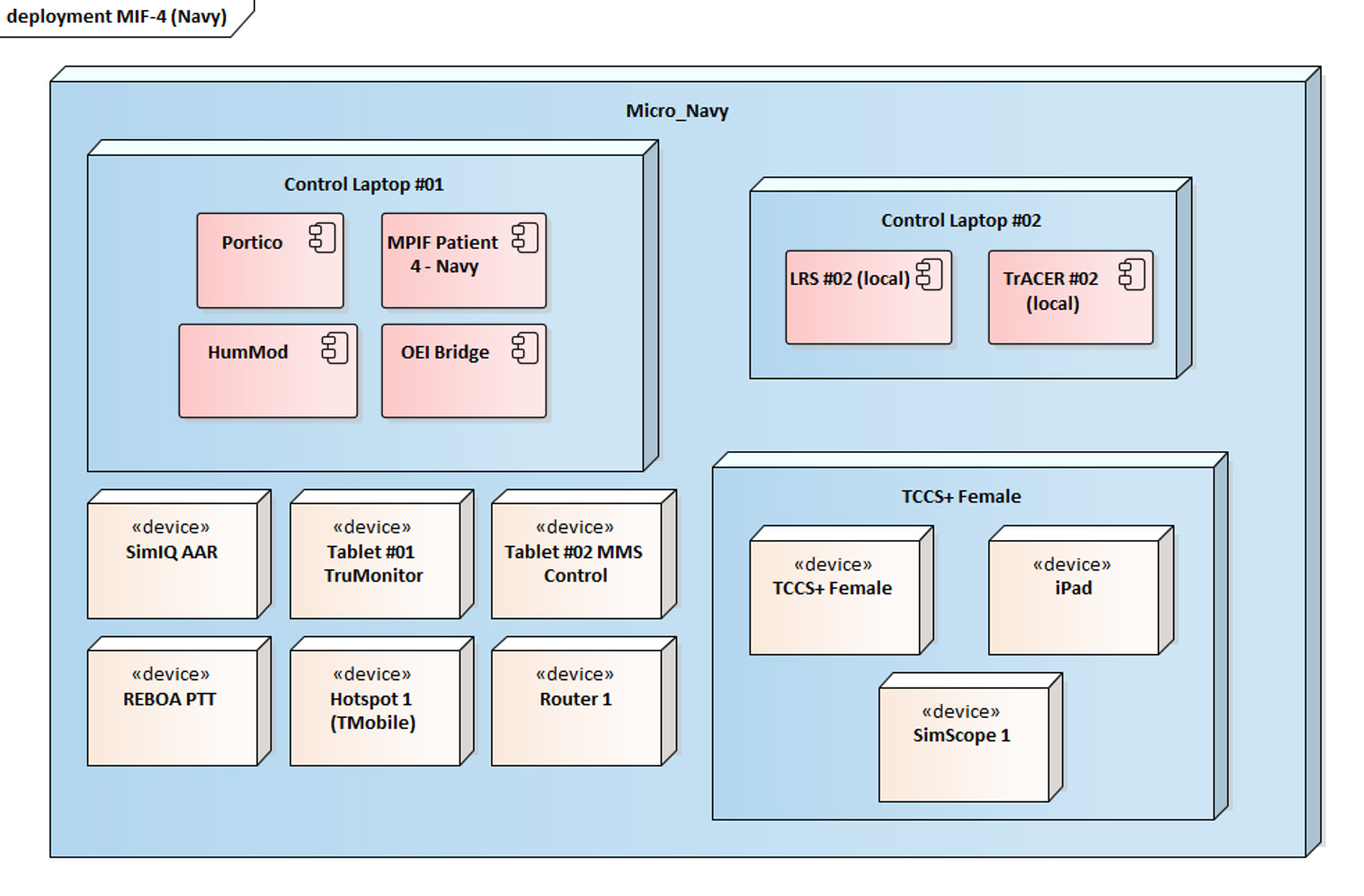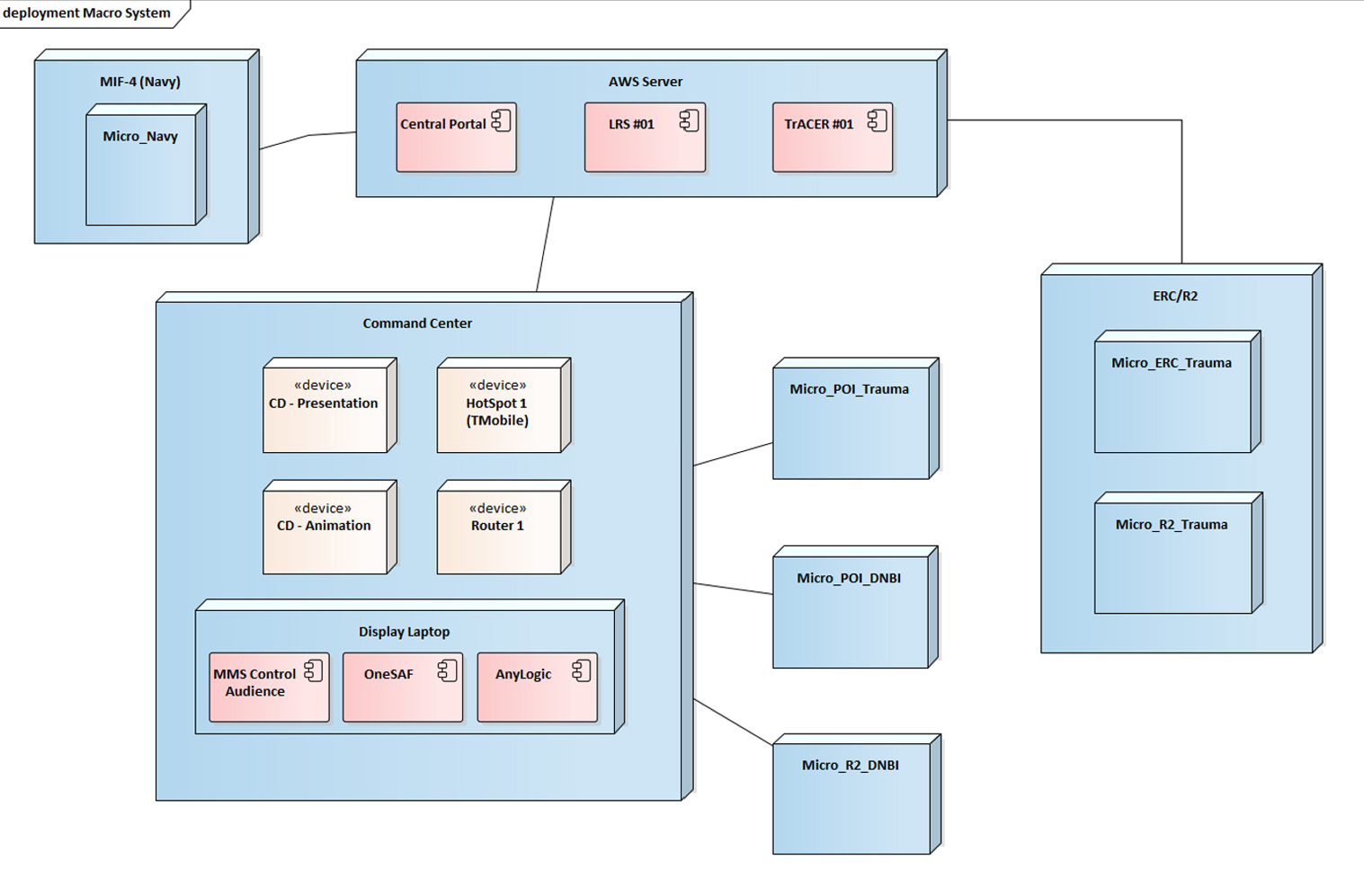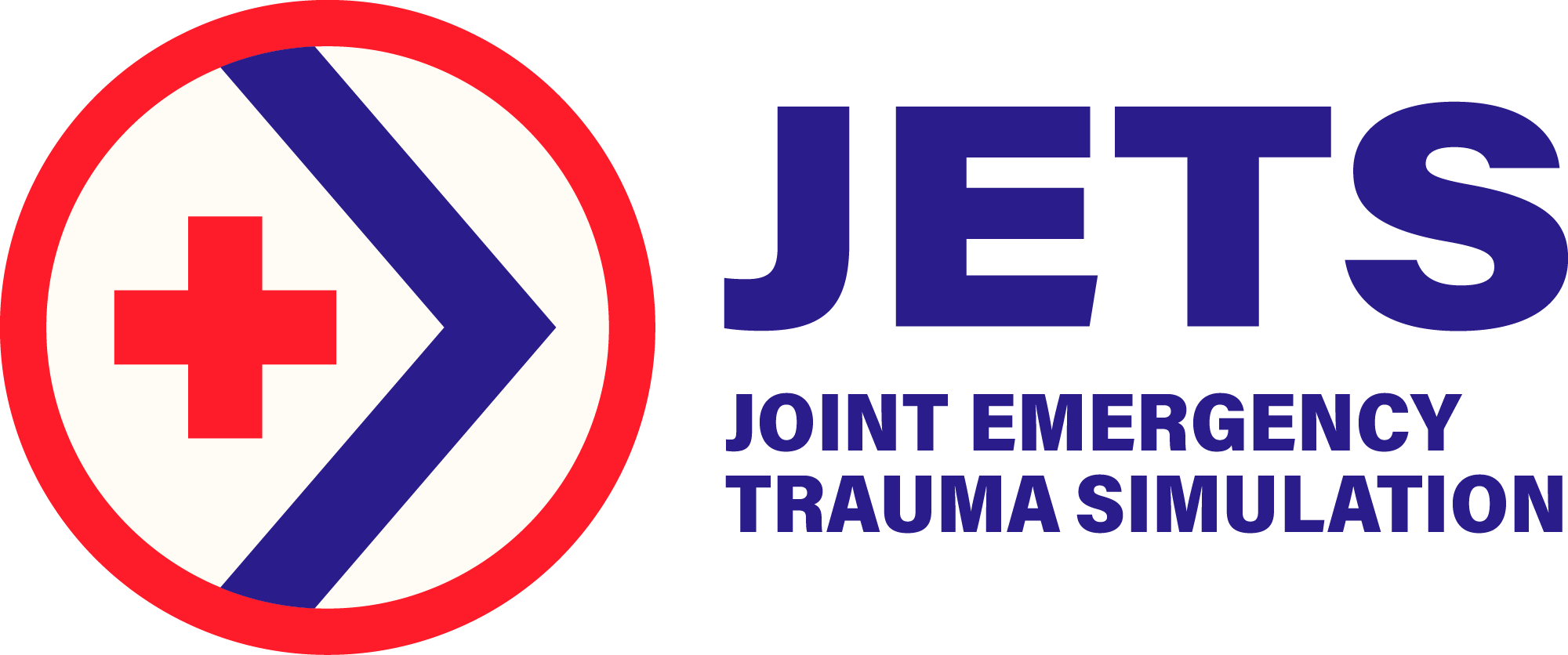Structure and Systems
COMPONENTS
Human Patient Simulators
Patient Simulator systems include full-sized, ruggedized, soldier-form remotely-activated simulators for comprehensive Tactical Combat Casualty Care preparation. Each is able to bear wound patterns consistent with combat wounds, which are designed for training in prehospital patient care of wound management and hemorrhage control. Simulators are rugged by design, but not indestructible, and should be treated with care similar to that of a combat casualty. Select the button below to view the Simulators used for the JETS Program.
Clinical Part Task Trainers
Part task trainers continue to evolve, and the technological advancements made in the field of medical simulation, the low-fidelity part task trainers remain part of the clinical skills and procedures at military medical locations. The part task trainers are utilized for education and training that help soldiers identify the locations of anatomical landmarks and the ability of the learner to acquire, develop, and maintain the cognitive and psychomotor skills associated with a particular procedure. Select the button below to view the Clincal Part Task Trainers used for the JETS Program.
Physiology Engines
The JETS architecture is an agnostic system in that it can work with any compatible physiology engine. Since JETS uses an object model to define the data standards used to communicate physiology data, any physiology engine can become compatible with JETS by adhering to those standards. HumMod is the physiology engine responsible for modeling the physiology of all patients involved in each segment of the JETS prototype system, where applicable. Select the button below to view the Physiology Engine used for the JETS Program.
Learning Management Systems
The end goal for JETS is to show that performance and assessment data can be captured throughout the federation and sent to a Learning Record Store (LRS). A Learning Management Systems (LMS) could then access the LRS to conduct a more detailed analysis on the data if desired. The JETS prototype uses the ADL LRS and standard xAPI statements to show that detailed learner performance data can be captured accurately using the federation. Select the button below to view the Learning Management System used for the JETS Program.
After Action Review
The after-action review (AAR) system creates automatic bookmarks as event objects are published to the federation. These bookmarks are timestamps in the recorded video that can be used to jump to the associated timestamps when reviewing the video. Each bookmark contains a text field from the event object to provide basic information about what was happening at the time of the bookmark (such as treatments or important learner actions). Select the button below to view the After Action Review used for the JETS Program.
Combat Simulations
Combat simulators have been used in the military for generations to train soldiers in tactical warfare. Including combat simulation in the demonstration segment showcased the ability for JETS to integrate with a tactical simulation system, in this case the integration with OneSAF. The integration focused on two primary capabilities such as 1) The ability for a tactial system to generate a casualty that can be sent to JETS for higher fidelity medical training, 2) The ability for JETS and a tactical system to communicate vehicle movement interactions for patient movement. Select the button below to view the Combat Simulations used for the JETS Program.
TC3 SIM
TC3 SIM is a cognitive skills trainer for trauma medicine focused on three preventable causes of death on the battlefield. The primary users of TC3SIM are Military, First Responders, Combat Medics, and Combat Life Savers. TC3SIM platform brings another level of technology that was used as part of the asynchronous demonstration for the JETS Phase III program. The application supports the existing training curriculum with the Army and demonstrates how Warfighters can use immersive training to further enhance their training and decision-making skills. Select the button below to view TC3 SIM used for the JETS Program.
MMS Control
The MMS Control is a platform used for the JETS Program. The system is a software system that serves as a central patient control system of the JETS federation. The system is a single interface that is capable of providing the user to connect to a federation, thus allowing the user to conduct treatments and handoff over the federation. Select the button below to view the MMS Control used for the JETS Program.
LEVELS OF SYSTEMS
MICRO SYSTEMS
The micro system level consists of multiple simulation components interacting together to create a single patient or localized training event. The JETS architecture enables intercommunication between these local components to create a cohesive, interoperable system. One application of this level would be to enhance capabilities of an existing patient simulator by adding integration to a physiology engine and after action review system.

Image Provided by IVIR Inc.

Image Provided by IVIR Inc.
MACRO SYSTEMS
At the macro system level, JETS enables multiple components and micro systems to interact. Additionally, the medical simulation components and micro systems, integration can include tactical or strategic combat simulations and logistics simulations. By integrating multiple micro systems, training events located at different sites can be linked to form one large, cohesive exercise that enables live patient handoffs between the different sites. JETS would allow handoff information and patient status to be transferred between sites, enabling live handoff training without having to travel between the locations.
MEGA SYSTEMS
The mega system level is the combination of multiple macro systems as well as integration with major DoD support systems such as the MHS GENESIS system, the Operation Virtual Health system, or training systems such as the Army MODS system.

